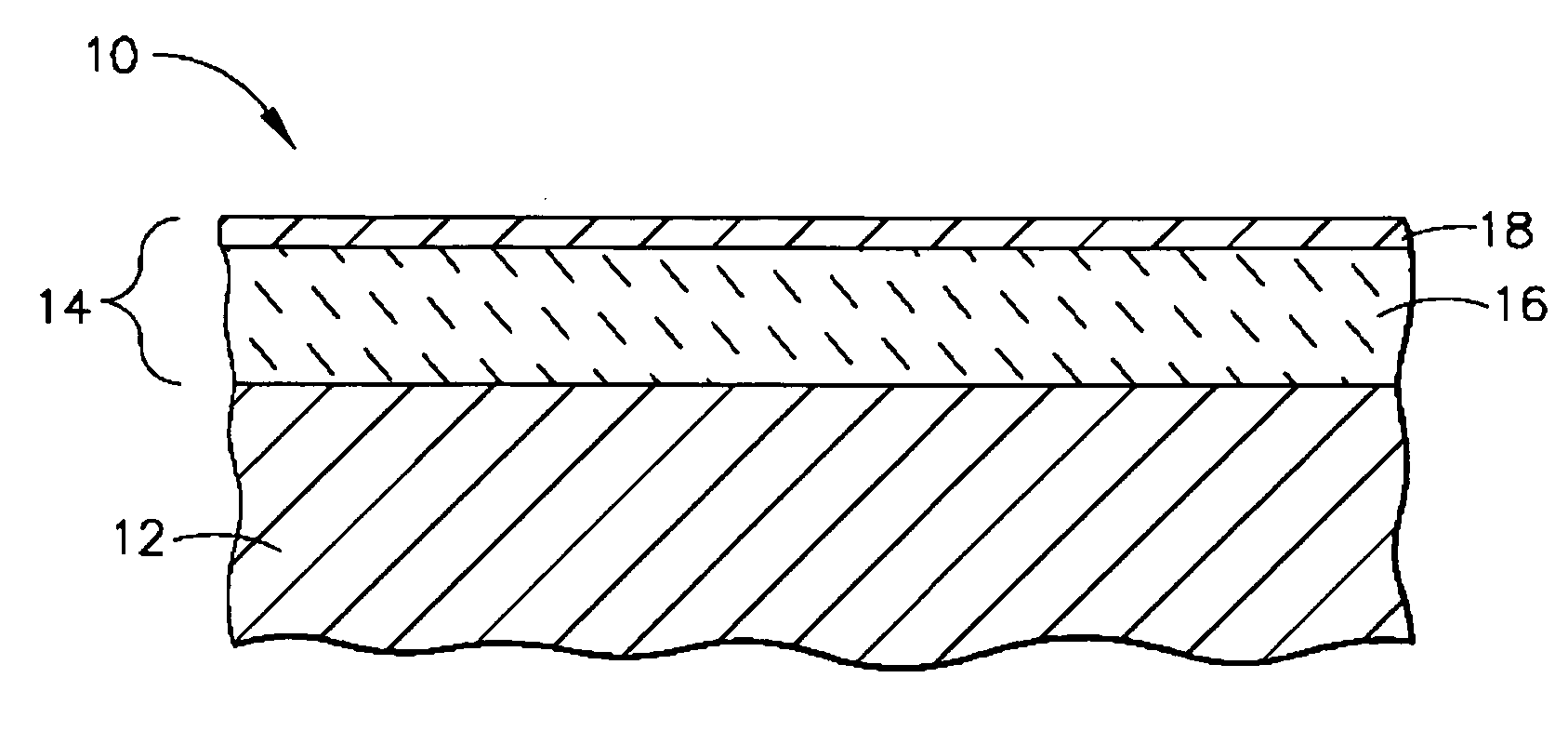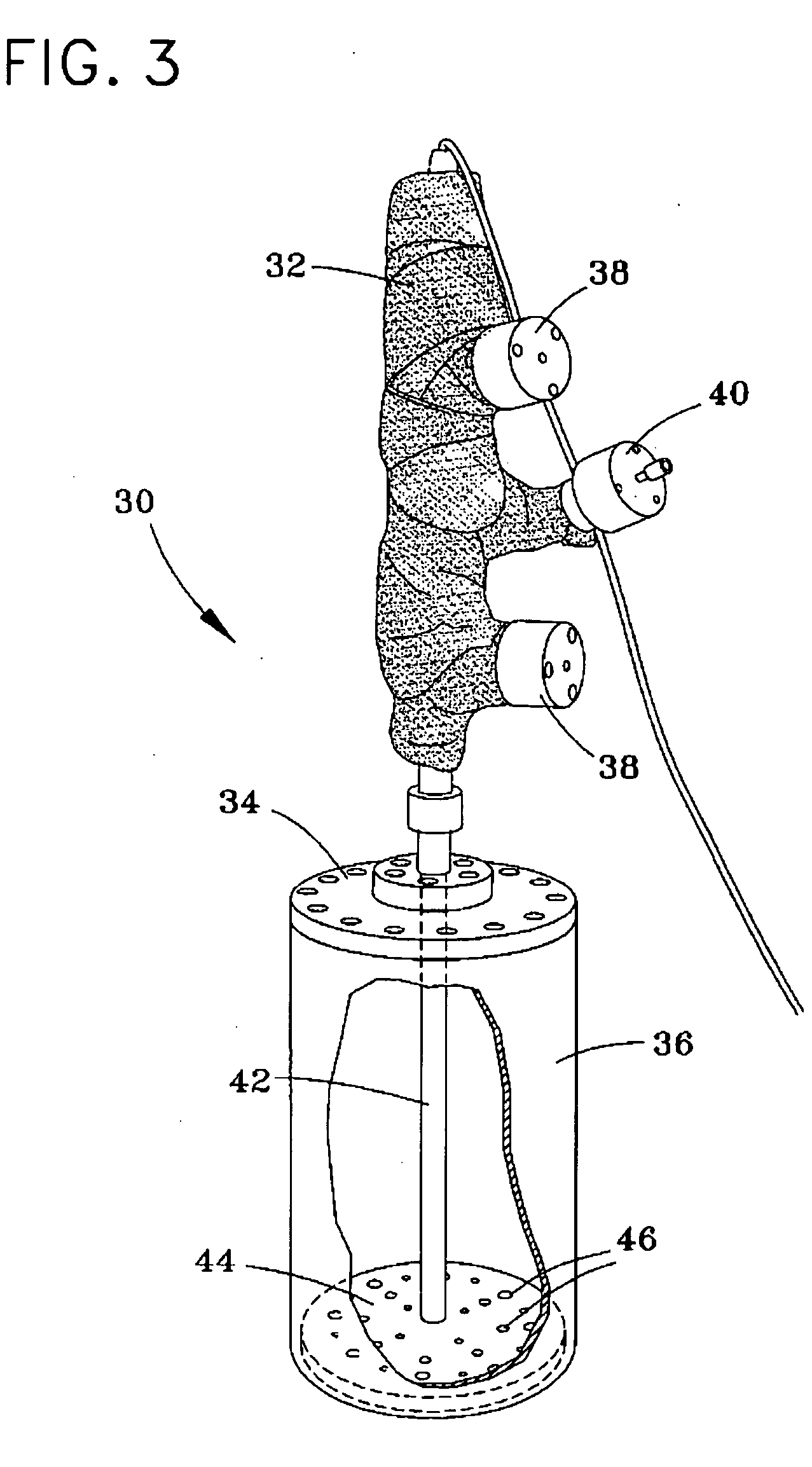Coating system and process and apparatus for depositing a coating system
a coating system and coating technology, applied in the field of coatings, can solve the problems of increasing the propensity for gum and coke formation, unsatisfactory carbonaceous deposits, and limiting the usefulness of fuel, so as to reduce the adhesion of such deposits
- Summary
- Abstract
- Description
- Claims
- Application Information
AI Technical Summary
Benefits of technology
Problems solved by technology
Method used
Image
Examples
Embodiment Construction
[0018]FIG. 1 represents a coating system 14 for a component 10 having a containment wall 12 that contacts a hydrocarbon fluid (e.g., fuels and oils) at elevated temperatures. The coating system 14 serves to prevent or at least significantly reduce the formation and adhesion of carbonaceous gum and coke deposits that would otherwise form and adhere to the wall 12 at temperatures in the range of about 600 to 800° F. (about 315 to 425° C.). The invention is applicable to any hydrocarbon fluid in which carbonaceous gum (or other polymers) deposits form when the fluid is subjected to elevated temperatures, such as about 105° C. to 345° C., and in which carbonaceous coke deposits form when the fluid is subjected to temperatures generally above 345° C. Such fluids may be pure hydrocarbon or mixtures thereof. Fluid containment articles that can benefit from the present invention may be any component which is adapted to contain or transport hot hydrocarbon fluid, and include but are not limi...
PUM
| Property | Measurement | Unit |
|---|---|---|
| thickness | aaaaa | aaaaa |
| temperature | aaaaa | aaaaa |
| thickness | aaaaa | aaaaa |
Abstract
Description
Claims
Application Information
 Login to View More
Login to View More - R&D
- Intellectual Property
- Life Sciences
- Materials
- Tech Scout
- Unparalleled Data Quality
- Higher Quality Content
- 60% Fewer Hallucinations
Browse by: Latest US Patents, China's latest patents, Technical Efficacy Thesaurus, Application Domain, Technology Topic, Popular Technical Reports.
© 2025 PatSnap. All rights reserved.Legal|Privacy policy|Modern Slavery Act Transparency Statement|Sitemap|About US| Contact US: help@patsnap.com



